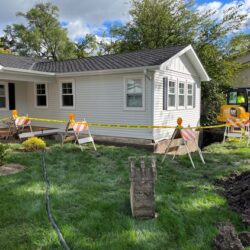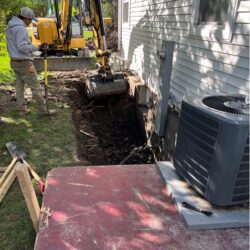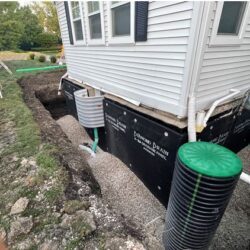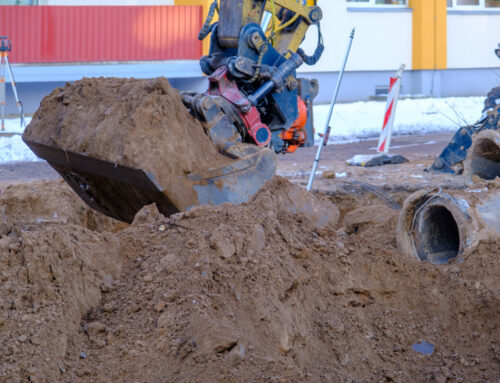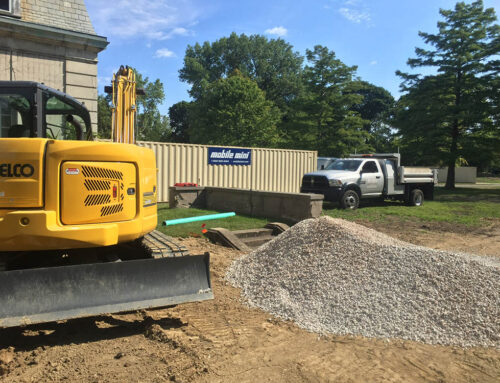Residential foundation drainage is crucial for the structural integrity of a home. If it is not properly maintained, it can lead to many problems, including cracks in the foundation and other areas of the building. If you live in an area with heavy rains, it’s even more important to install an effective foundation drainage system to prevent water from seeping into the foundation and basement walls. Improper drainage can also lead to mold growth, which can be hazardous to the health of your family. To prevent these problems, you should seek the assistance of an expert. We will explain what foundation drainage is, why it’s important, and the symptoms that indicate a problem.
Signs of a Foundation Drainage Problem
If you notice puddles on your basement floor or lakes on the front lawn, you may have a drainage problem. But many problems are less obvious. If you spot signs of a drainage problem early, you can avoid expensive repairs. A drainage problem can damage your home’s foundation and may lead to interior flooding. Some symptoms of a drainage problem are fairly obvious, like water stains on the sides of the foundation. Without exterior drainage systems, the entire residential structure could be damaged and could lead to the erosion of surrounding earth. A drainage problem should be fixed as soon as possible because extensive repairs can be costly.
Types of Foundation Drainage
Residential foundation drainage can help prevent expensive and dangerous issues from occurring. Oftentimes, homeowners don’t realize that their homes have foundation damage until the wall of their basement or crawl space starts to swell. However, these problems can be very expensive to repair, so it’s better to protect your home’s foundation walls from the start. There are several types of residential foundation drainage, all of which can help protect your home and prevent expensive repairs in the future.
- A type of foundation drains is known as French drain or perimeter drains. These are made up of a perforated pipe placed beside the foundation wall. These pipes are sloped away from the structure. As water is collected in the plastic pipe, that water is then carried away from the structure to prevent flooding or residual water damage. This drain pipe is installed alongside the foundation wall and usually surrounded by gravel or rock.
- A footing drain is installed as an exterior foundation drainage system. It is placed near the wall footing on the outside the foundation wall. This drain is typically covered with gravel or filter fabric and drains to a catch basin or storm drain.
- Another type of residential foundation drainage is called grading drainage. This is one of the simplest system of drainage. Essentially grading drainage is reshaping the land and removing low spots so that water collects and flows to a lower elevation away from the structure. When it comes to grading drainage, there are certain slope requirements based on the surface type. For example, paved surfaces should have a minimum of a 1% slope and areas with a type of soil should have at least a 2% percent slope.
- A sump pump is used in the interior of a structure to prevent drainage problems. When the surface water reaches a certain level in the sump pit, the sump pump pumps the excess water out of the basement and away from the structure using a discharge line typically 10 to 20 feet from the property line.
Challenges of Foundation Drainage
Although foundation drainage can be beneficial in reducing dampness, it also carries a significant construction and maintenance cost. Its perforated pipes need to be cleaned and maintained regularly to prevent silt buildup. Installing foundation drainage requires the excavating and removal of soil around the foundation. This work is time-consuming and requires skilled labor. One of the main drawbacks of foundation drainage is that the footing drain system can be difficult to inspect unless it’s dug up.
Solving Residential Drainage Issues
Hiring an expert is the best solution to ensuring your home’s foundation is protected. Behm Enterprises recently completed a foundation drainage solution to a residence that was experiencing poor drainage around their foundation. Here are the steps we took in helping this homeowner fix their foundation drainage issues.
Excavation work around the existing basement foundation
- Excavation for Foundation Drainage
- Excavation for Foundation Drainage
- Excavation for Foundation Drainage
Installation of the footing drain tile around the perimeter of the existing basement foundation. We have the right equipment for each step of excavation.
- Excavation for Foundation Drainage
- Excavation for Foundation Drainage
- Excavation for Foundation Drainage
Once the foundation drainage issues were solved and the area was backfilled, we completed restoration work. We fine graded and re-seeded the yard.
- Excavation for Foundation Drainage
Behm Enterprises takes pride in helping solve residential foundation drainage problems. We have over 30 years of experience as excavating contractors providing expert grading and utility services. We also offer complete solutions to all residential needs including sewer line repair, water repair, and storm sewer repairs. Give us a call today for solutions to your residential foundation drainage issues.


